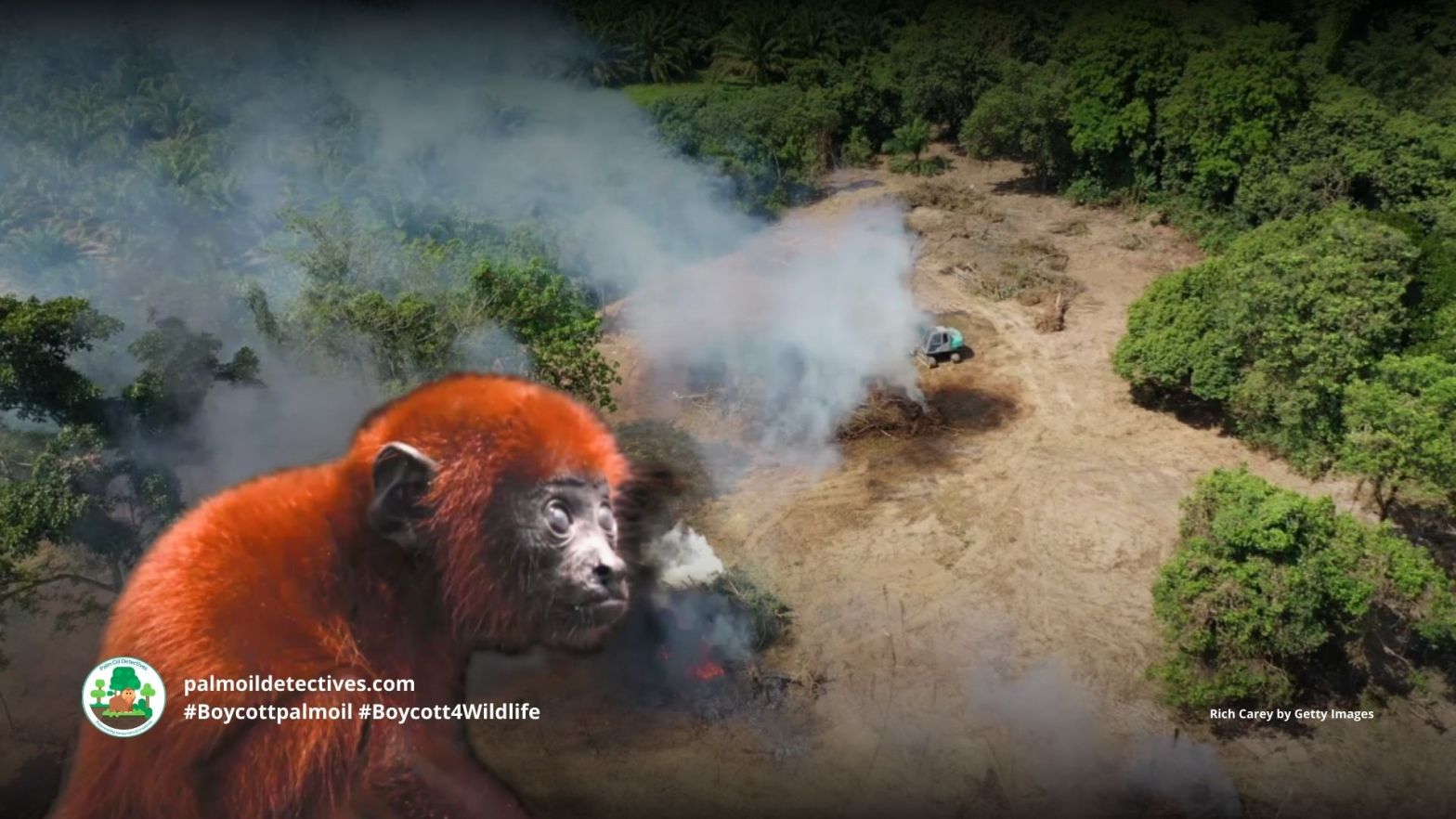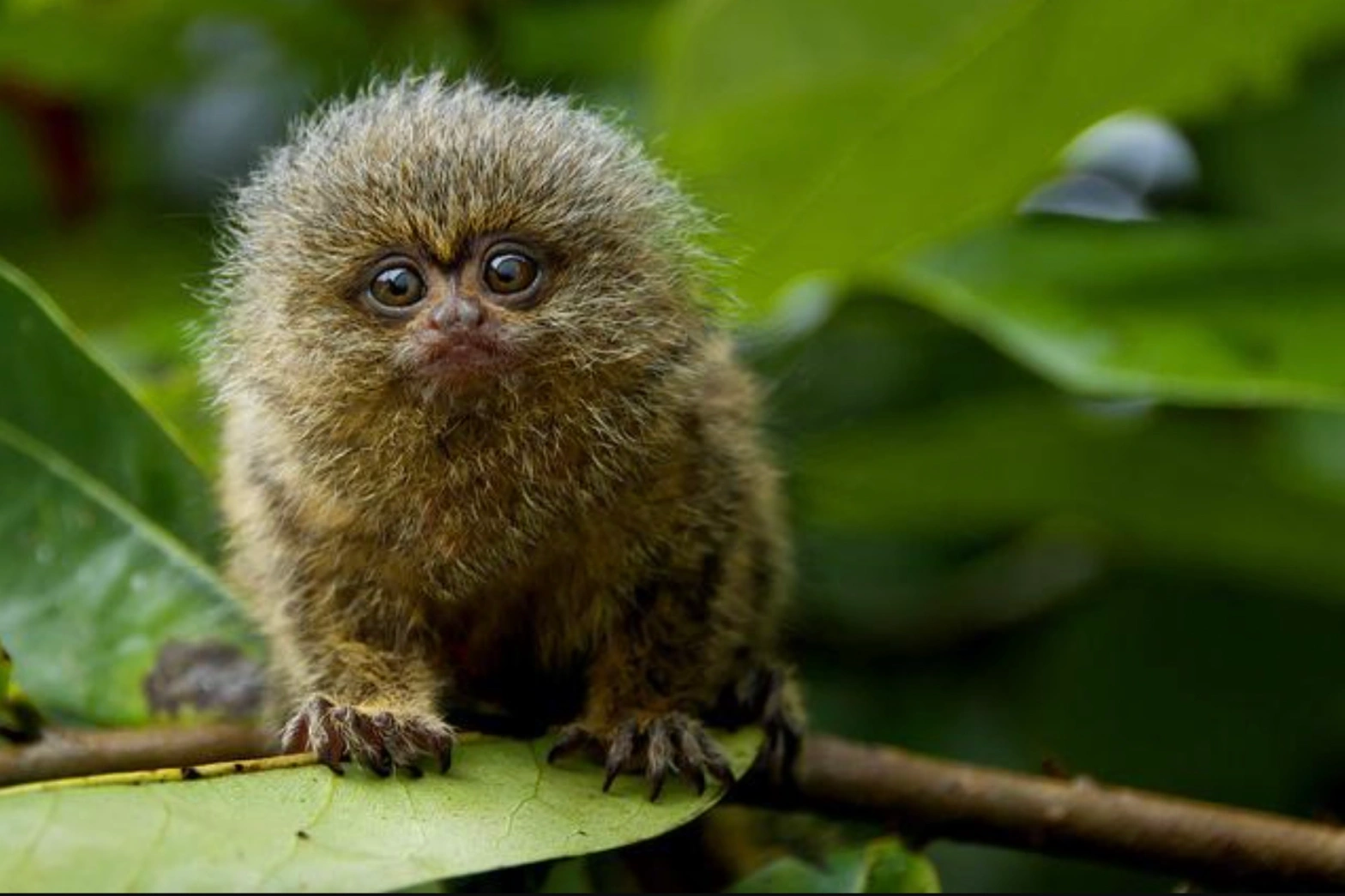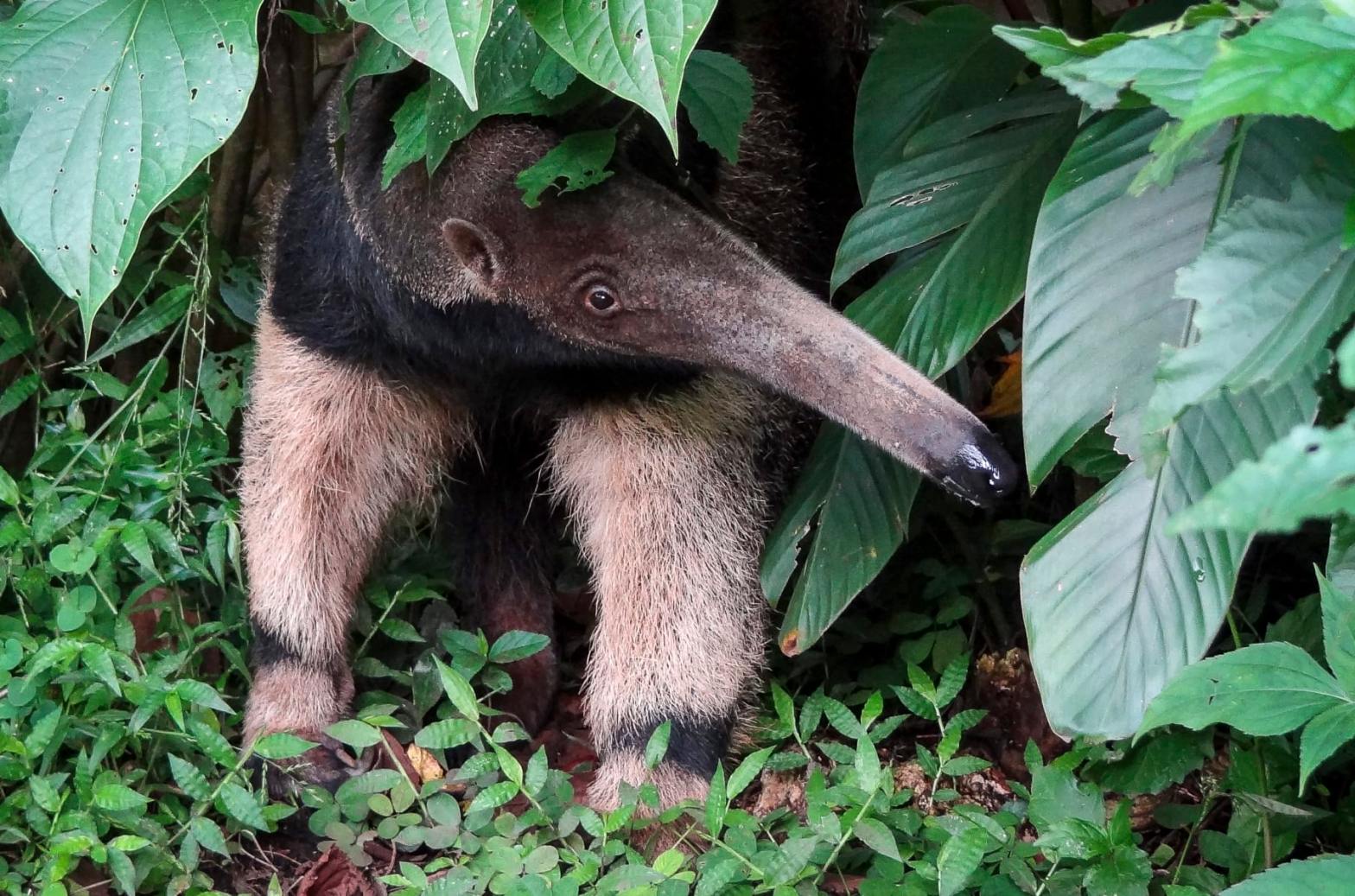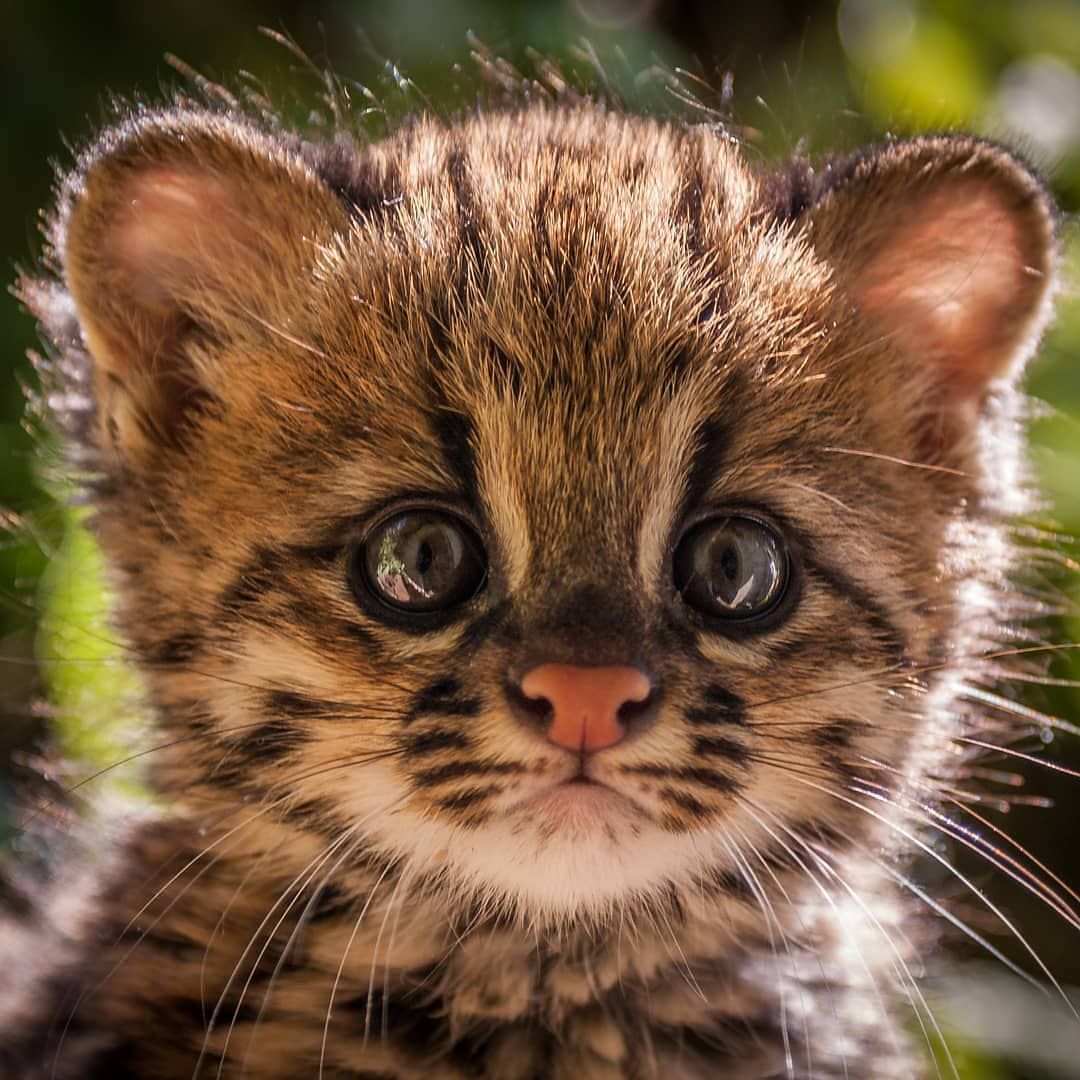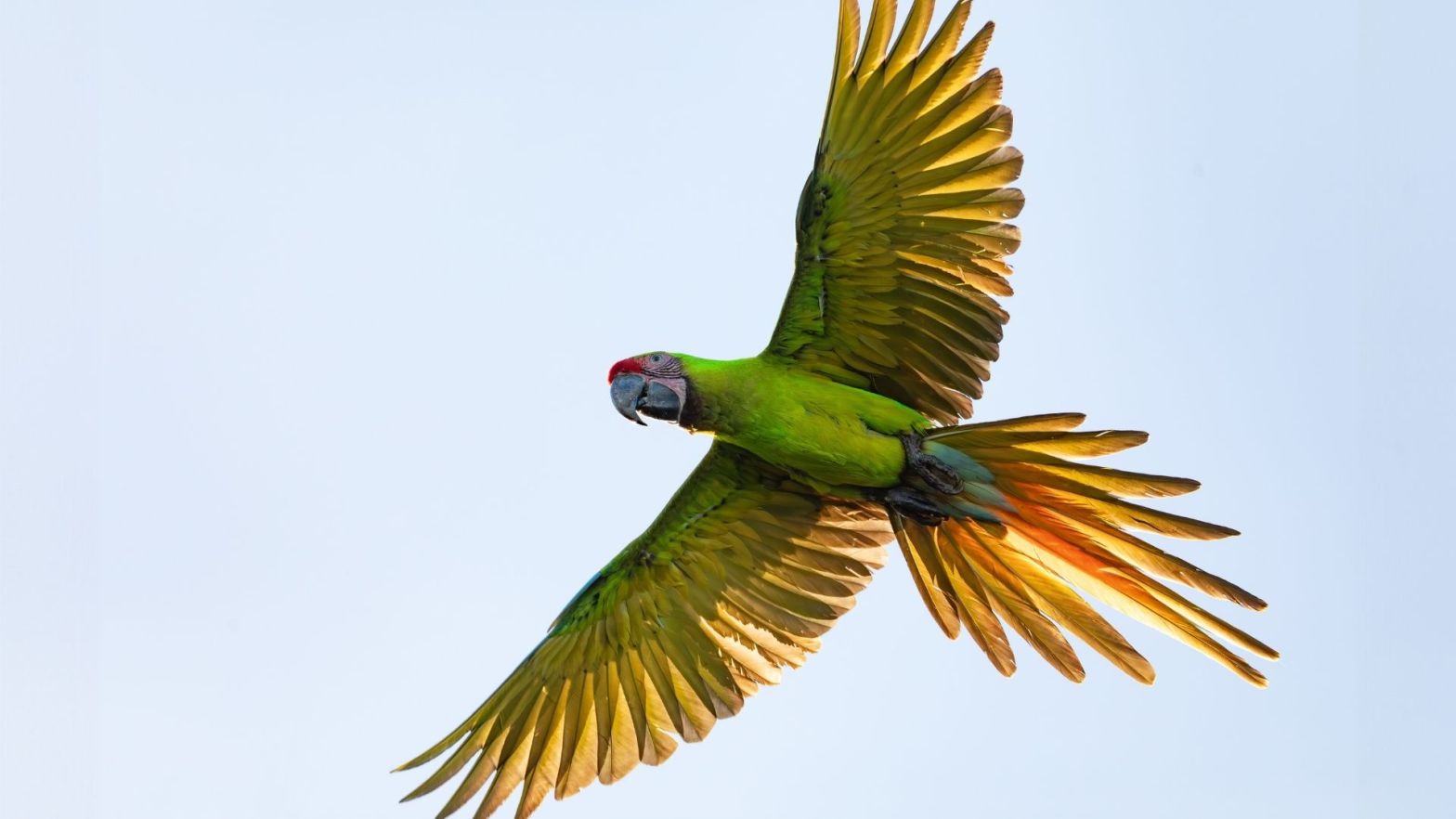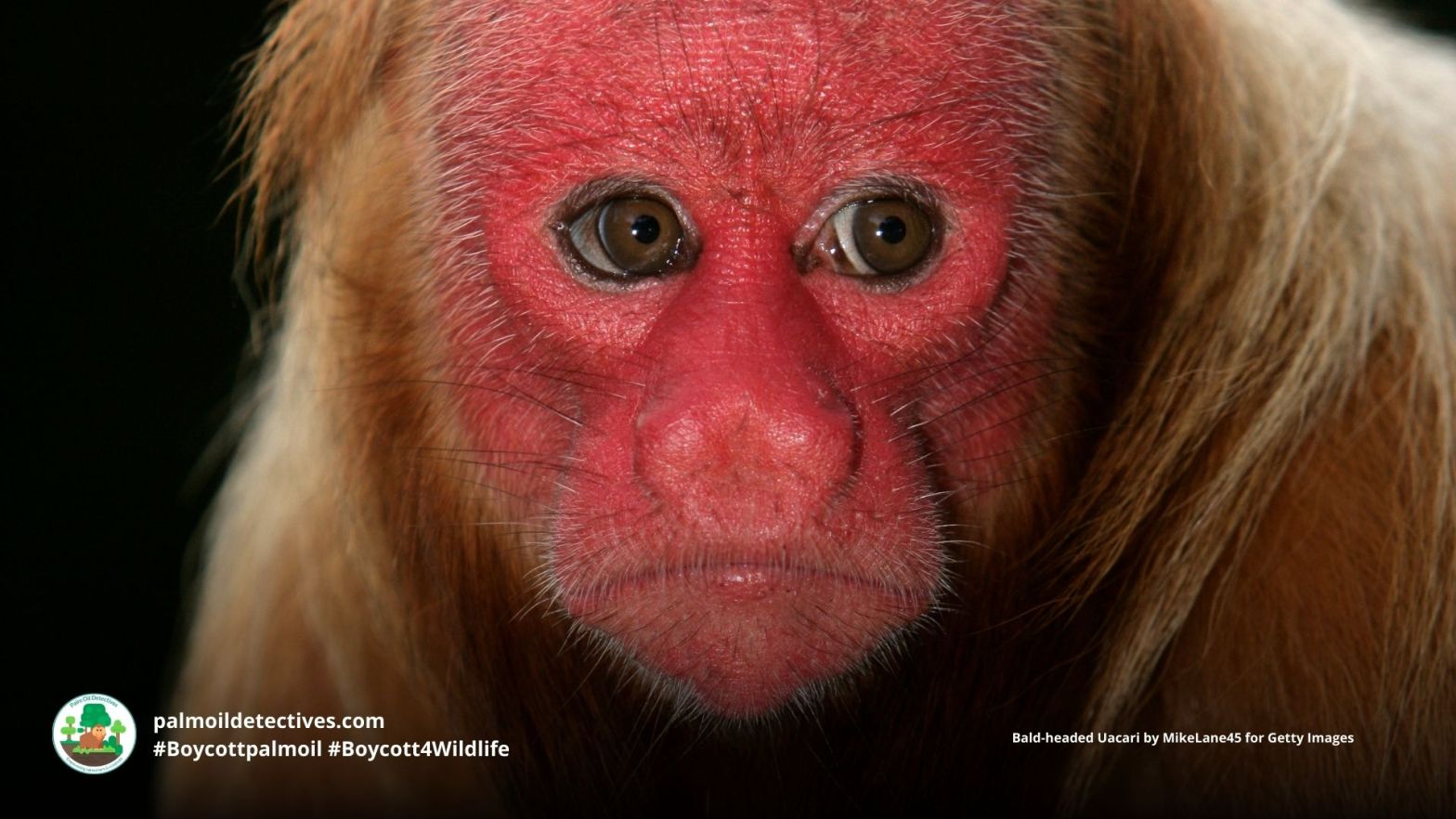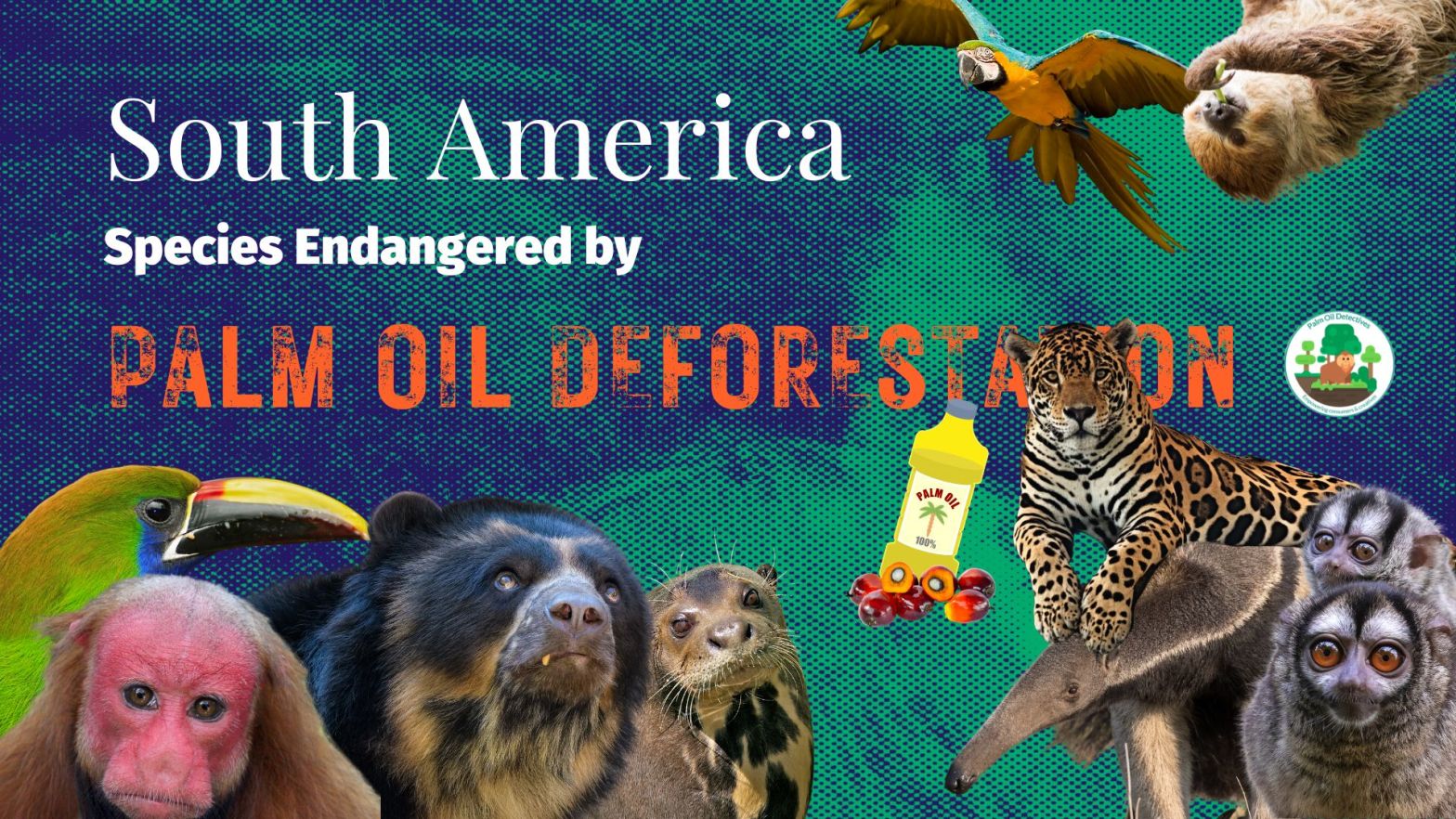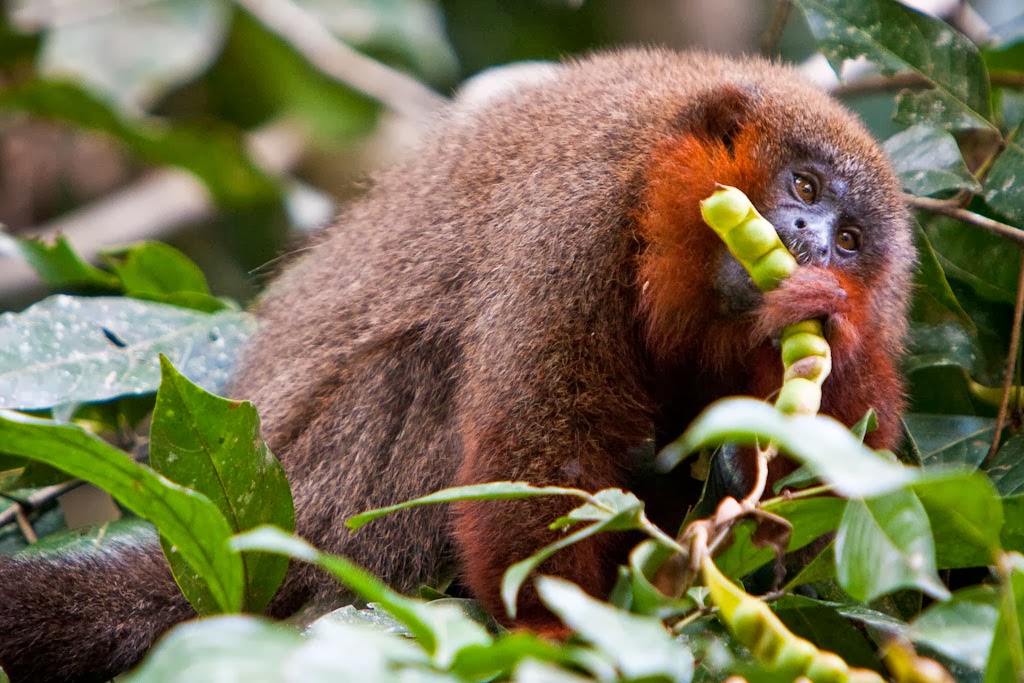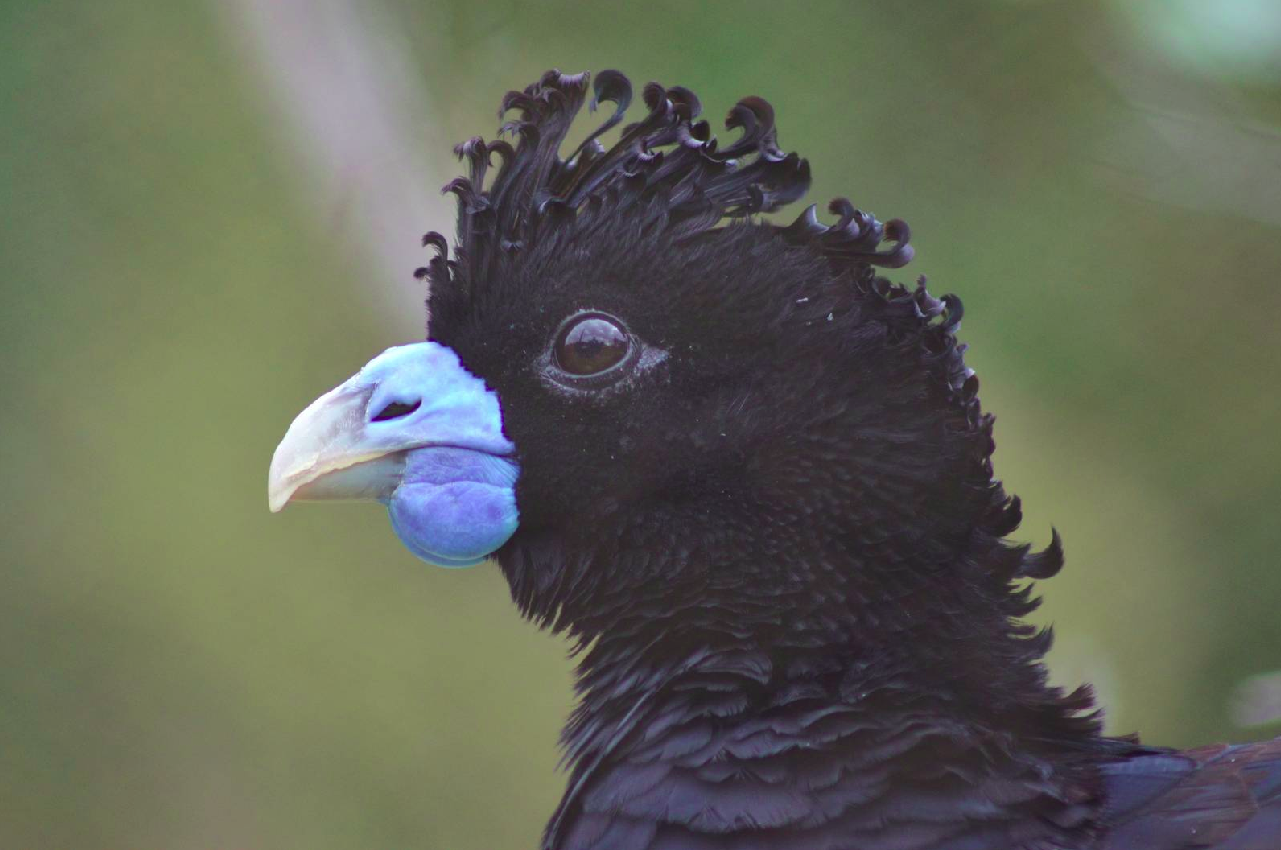Red howlers are the largest of the howler monkey species. They have dense fur that ranges from brown to dark red, with gold or bright orange undersides – the colour can vary based on their age and habitat. Their bare, dark faces contrast with the surrounding fur. They have stubby noses, wide jaws, and thick beards. Their throats appear swollen due to an enlarged hyoid bone at the base of the tongue. Males are larger, with darker and denser beards. Their tails are exceptionally long, with the last third being hairless underneath, which helps them grip branches better. They face multiple threats including palm oil, soy and meat deforestation, the construction of hydroelectric dams, hunting and human persecution. Help them to survive each time you shop and #Boycottpalmoil #Boycott4Wildlife
Tag Archives: Colombia
Amazon River Dolphin Inia geoffrensis
The Amazon River dolphins, also known as the Boto Dolphins or Amazon Pink River Dolphins are playful, curious and intelligent mammals, the largest river dolphin species in the world. Known for their stunning pink coloured skin they are endangered due to human-related threats like #palmoil, #meat and #soy #deforestation, #gold #mining and #pollution. Help them survive each time you shop and use your wallet as a weapon. Be #vegan, #Boycottpalmoil and #Boycott4Wildlife
Spectacled Bear Tremarctos ornatus
Spectacled bears are known as the ‘peaceful and gentle bear’. They are the only bear living in the tropics of South America. Like many other animals in tropical ecosystems they are endangered. They get their name from their eye-catching markings around their eyes, face and neck that resemble spectacles. Each bear has unique markings like a fingerprint and some bears don’t have them at all.
They are found throughout the thin line of Peruvian rainforest and their range stretches across several countries: Bolivia, Ecuador, Peru, Venezuela and Colombia. Their main threats are habitat loss to mining, logging, cattle farming, palm oil and soy as well as hunting. Protect them each time you shop by being #boycotting meat, be #vegan #boycottpalmoil #Boycott4Wildlife
Jaguar Panthera onca
Jaguars, currently deemed Near Threatened, face a substantial habitat reduction of up to 25% in just over two decades. This decline stems from rampant deforestation for palm oil, soy, and meat, as well as illegal poaching for trophies and body parts. These magnificent creatures also suffer from conflicts arising due to livestock depredation and competition with human hunters for food. Aggravating the issue, Latin America’s widespread agricultural industries, like soy, palm oil, and cattle ranching, mainly serve foreign markets rather than local needs. Let’s step up and use our wallets as a weapons! Be #vegan #Boycottpalmoil #Boycott4Wildlife.
Santa Marta White-fronted Capuchin Cebus malitiosus
Santa Marta White-fronted Capuchin Cebus malitiosus Endangered Colombia The Santa Marta white-fronted capuchin is threatened in Colombia by habitat loss and fragmentation due to cattle ranching and oil palm agro-industries. Pet trade may also pose imminent threats to wild populations of the Santa Marta white-fronted capuchin, especially in areas where tourism is widespread. IUCN redContinue reading “Santa Marta White-fronted Capuchin Cebus malitiosus”
Pygmy Marmoset Cebuella niveiventris and Cebuella pygmaea
The petite pygmy marmoset, the world’s tiniest true monkey, boasts a mix of brownish-gold, grey, and tawny fur. These little wonders, weighing just around 100 grams, communicate uniquely using chemical, vocal, and visual cues to ensure group safety and harmony. Although these marmosets prefer river-edge forests and can adapt to secondary forests, their homes are under serious threat. Rampant deforestation, mining, and palm oil cultivation are eroding their habitats, pushing the subspecies Cebuella niveiventris towards a “Vulnerable” status. The situation is dire, with an estimated 30% reduction in their population in just 18 years. Protect these delicate creatures and their home – use your wallet as a weapon, be #vegan, #BoycottPalmOil, and #Boycott4Wildlife.🌳🐒
Giant Anteater Myrmecophaga tridactyla
Giant Anteater Myrmecophaga tridactyla Extant (resident): Argentina; Bolivia; Brazil; Colombia; Costa Rica; Ecuador; French Guiana; Guyana; Honduras; Nicaragua; Panama; Paraguay; Peru; Suriname; Venezuela Possibly Extinct: Argentina; Belize; El Salvador; Guatemala; Uruguay Vulnerable The Giant Anteater is at risk from habitat loss in parts of their range, and this is a significant threat to Central AmericanContinue reading “Giant Anteater Myrmecophaga tridactyla”
Northern Tiger Cat (Oncilla) Leopardus tigrinus
Northern Tiger Cats, or Oncillas, are sleek, large-eared wildcats often confused with margays or ocelots due to their similarities. While primarily nocturnal, they adapt their behavior according to their environment, such as hunting diurnal lizards in Caatinga. These solitary creatures, though mostly ground-dwelling, are adept climbers. They communicate through purring as kittens and a unique “gurgle” as adults. Their habitats range from the semi-arid Caatinga to the Andean cloud forests. Yet, once targeted for their fur, they now face threats from habitat loss, illegal trade, road accidents, and retaliatory killings. Let’s champion their cause and use our wallet as a weapon: be #vegan #Boycottpalmoil #Boycott4Wildlife.
Channel-billed Toucan Ramphastos vitellinus
Channel-billed Toucan Ramphastos vitellinus Vulnerable Brazil; Colombia; French Guiana; Guyana; Suriname; Trinidad and Tobago; Venezuela The primary threat to the Channel-billed Toucan is accelerating deforestation in the Amazon basin as land is cleared for cattle ranching, palm oil and soy production, facilitated by expansion of the road network (Soares-Filho et al. 2006, Bird et al.Continue reading “Channel-billed Toucan Ramphastos vitellinus”
Baird’s Tapir Tapirus bairdii
Baird’s Tapir Tapirus bairdii Endangered Extant (resident): Belize; Colombia; Costa Rica; Guatemala; Honduras; Mexico; Nicaragua; Panama Extinct: El Salvador Presence Uncertain: Ecuador Baird’s tapirs may look like they are relatives of elephants, but they’re actually closer kin to horses, donkeys, zebras, and rhinoceroses. The Baird’s Tapir is found in forested areas with ponds and streamsContinue reading “Baird’s Tapir Tapirus bairdii”
Varied White-fronted Capuchin Cebus versicolor
Varied White-fronted Capuchin Cebus versicolor Colombia Endangered Varied White-fronted Capuchin monkeys are gregarious and social animals that live in multi-male multi-female groups of approximately 20 individuals (including young), they are territorial and actively defends territories. Their main threats are agriculture, urban sprawl, deforestation, increasing energy matrix, increasing road matrix habitat fragmentation, habitat reduction, hunting, harvestingContinue reading “Varied White-fronted Capuchin Cebus versicolor”
Great Green Macaw Ara ambiguus
The extremely rare Pernambuco Pygmy-owl is critically endangered on the @IUCNredlist due to massive logging and deforestation for #palmoil #beef farming in #Brazil support this animal’s survival by making art and joining the #boycott4wildlife
Harlequin Poison Frog Oophaga histrionica
The enigmatic blue-billed curassow (Crax alberti – local name “Paujil”), endemic to the tropical humid forests of northern Colombia, is the cracid species most threatened with extinction in the wild from #deforestation
Orinoco Crocodile Crocodylus intermedius
The majestic Orinoco Crocodile, one of the largest crocodylian species globally, resides in the northern part of South America, particularly in Colombia and Venezuela. They inhabit diverse environments, from tropical evergreen forest rivers to piedmont streams and seasonal rivers in savannas, these ancient creatures are now critically endangered due to various threats. Looming dangers for these beautiful animals include habitat change, fragmentation, and pollution, particularly from riverside development and human occupancy.
#Goldmining and #palmoil #pollution pose a massive risk, imperiling these magnificent crocodiles. Facing an inferred reduction in population size of over 80% in three generations, primarily from historical over-hunting, urgent conservation efforts are essential to safeguard the Orinoco Crocodile from the brink of extinction. Join the cause to protect them and say no to palm oil, soy, and beef products contributing to deforestation. #Boycott4Wildlife #SaveOrinocoCrocodile #BoycottGold4Yanomami
Sinu Parakeet Pyrrhura subandina
The extremely rare Pernambuco Pygmy-owl is critically endangered on the @IUCNredlist due to massive logging and deforestation for #palmoil #beef farming in #Brazil support this animal’s survival by making art and joining the #boycott4wildlife
Brown Spider Monkey Ateles hybridus
The enigmatic blue-billed curassow (Crax alberti – local name “Paujil”), endemic to the tropical humid forests of northern Colombia, is the cracid species most threatened with extinction in the wild from #deforestation
Bald-headed Uacari Cacajao calvus
With their long shaggy coats and striking bright red faces, Bald-headed Uacaris are true icons of the Amazon rainforest and are found in Brazil, Peru and Colombia. When an Uacari has a bright red face this indicates good health, a pale face indicates a sickly physical state. These monkeys spend most of the year in the tree tops to avoid the seasonal flooding of their Amazonian habitat. During the dry season, they return to the ground to look for seeds. They face an existential threat from palm oil, soy and meat deforestation in the Amazon.
South America: Species Endangered by Palm Oil Deforestation
As the lush equatorial rainforests of South East Asia are exhausted, increasingly focus is being placed on parts of Central and South America. Oil Palm is a growing commodity there and is found in Colombia, Brazil, Ecuador, Guatemala and Mexico. Help the rare and beautiful animals of South and Central America to survive the scourge of palm oil and #Boycottpalmoil #Boycott4Wildlife in the supermarket. Learn more
Caquetá Tití Monkey Plecturocebus caquetensis
Caquetá Titi Monkeys make a distinctive purr like kittens. They form monogamous partnerships. Discovered only in 2010 they are now critically endangered due to massive deforestation in #Colombia for #palmoil and #timber #Boycottpalmoil #Boycott4Wildlife
Blue-billed Curassow Crax alberti
The enigmatic blue-billed curassow (Crax alberti – local name “Paujil”), endemic to the tropical humid forests of northern Colombia, is the cracid species most threatened with extinction in the wild from #deforestation

